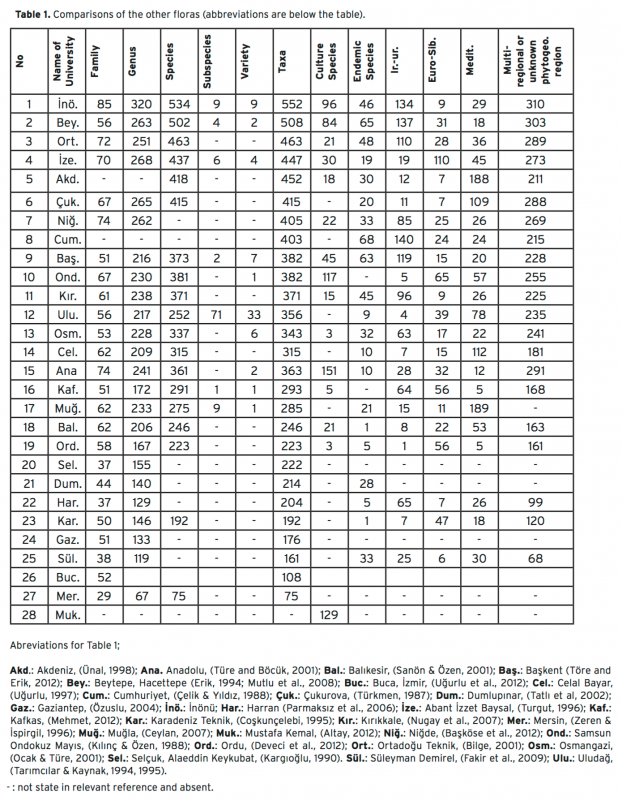In this research, floristic list of vascular plant specimens which are located in the main campus area of İnönü University have been compiled with stored specimen in INU herbarium and collected specimens in the field. Collection date of the specimen in the list was dated from 1986 to 2015. After the identification of the speci- mens, the total flora has been determined as 552 taxa belonging to 534 species, 320 genera and 85 families. These results are indicated that the flora of main campus area of İnönü Üniversity is the richest biodiversity when it’s compared within the other campus floras in Turkey. The endemism rate of the area is 8.33% for the 46 taxa. The largest 3 families are Fabaceae (57 species), Asteraceae (46 species) and Poaceae (47 species). The largest genera are Medicago (10 species), Euphorbia (9 species), Alyssum, Astragalus and Salvia (7 species). The phytogeographical spectrum of the species is as follows: Irano-Turanian elements 134 (24.27%), Mediter- ranean elements 29 (5.25%) and Euro-Siberian elements 9 (1.63%).
Bu çalışmada İnönü Üniversitesi merkez kampüs alanı içinde yeralan iletim demetli bitkilerin listesi INU herbaryumunda saklanan ve arazi çalışmasında toplanan örneklerden oluşturulmuştur. Listedeki türler 1986 ve 2015 tarihleri arasında toplanmıştır. Örnek teşhislerinin tamamlanmasından sonra 85 familya, 390 cins ve 534 türe ait 552 takson tanımlanmıştır. Bu sonuçlar Türkiye’deki diğer kampüs floraları ile kıyaslandığında İnönü Üniversitesi merkez kampüs florasının en zengin biyoçeşitliliğe sahip olduğu görülmektedir. Çalışma alanıda 46 endemik tür olup endemism oranı %8.33’dür. En büyük üç familya Fabaceae (57 tür), Asteraceae (46 tür) ve Poaceae (47 tür)’dir. En büyük cinsler Medicago (10 tür), Euphorbia (9 tür), Alyssum, Astragalus ve Salvia (7 tür)’dır. Fitocoğrafik bölgelere göre türlerin dağılımı; Iran-Turan elementi 134 (24.27%), Akdeniz elementi 29 (5.25%) ve Avrupa-Sibirya elementi 9’dur (1.63%).

Download Article in PDF (303.9 kB)